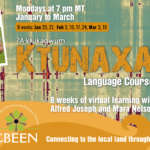Weather woes ease up in Nelson region; Highway between New Denver and Kaslo remains closed
By Suzy Hamilton, The Nelson Daily
The heavy rain that pummeled the East and West Kootenay is on its way out, as skies begin clearing and temperatures return to normal by Sunday.
But not without causing evacuations, major damage and road closures on Hwy 31 A between New Denver and Kaslo—which is still closed—two mudslides on Hwy 31 north of Kaslo that reduced traffic to single lanes, and a sinkhole, now repaired, on Hwy 6, one km south of the Crescent Valley Co-op in the Slocan Valley.
The rain is letting up but normal temperatures are not expected until Sunday as a rainfall warning remains.
“In a word, it’s unsettled,” said Ron Lakeman with the Southeast Fire Centre in Castlegar. “Sunday looks like a better day, back into the low 20s.”
The 76 millimetres of rain that fell locally mid-week was due to an upper low off the coast of Washington state, Lakeman said. “It’s now over western Montana. These systems move counterclockwise.”
Stranded motorists and residents without water may not agree, but heavy June rains are nothing new Lakeman said. “We call them cold low seasons in the month of June.”
“We were way behind normal, now we’re a touch above normal.”
This is nothing like the June rains of 2012, said Lakeman. “By this time last year we had 227 mm of rain. This year we’re up to 76 mm.”
A rainfall warning from Environment Canada remained in effect for the region through Thursday, with 10‐20 mm of rain expected through most areas, and up to 30 mm across the southeast part of the province.
Creeks in the Nelson area are raging, but most have peaked. “Smaller creeks like Duhamel and Redfish on Nelson’s North Shore have peaked and on their way down,” said Dave Campbell, head of the River Forecasting Centre.
But a flood watch remains for the Slocan River, which is expected to continue to rise, leveling off by Friday.
A flood watch means that river levels are rising and will approach or may exceed bank full. Flooding of areas adjacent to affected rivers may occur. Residents are urged to use extreme caution near riverbanks.
Kootenay Lake got a “quick pulse” of water during the rain, said Campbell, but not a big volume. “The snow melt was about a week early,” he said. “It was extremely late the last two years.”
Damage in the Kootenays did not compare to the destruction caused by the torrential rains on the east side of the Rockies. Flooding, mudslides and washouts had residents evacuated and a state of emergency declared in Canmore, and other areas of southwestern Alberta including Calgary.
The rain is expected to continue through Friday in Alberta.
For current hwy conditions go to www.bchighway.com or www.drivebc.ca.

























